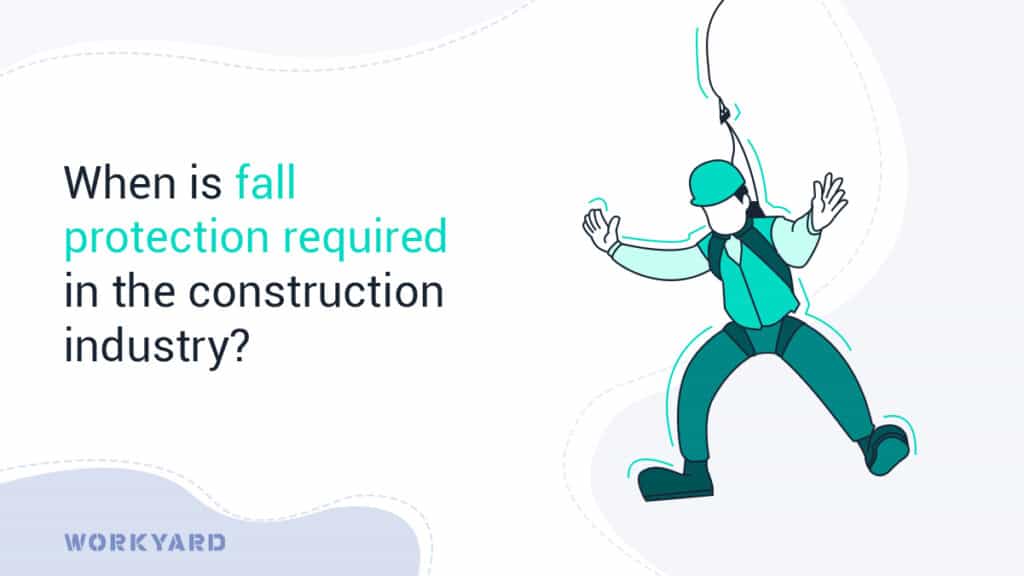This question is about Risk Management In Construction.
When Is Fall Protection Required In The Construction Industry?
Fall protection is a critical aspect of ensuring the safety of workers in the construction industry. It’s federally mandated to prevent falls from heights and minimize the risk of injuries or fatalities.
Below are some important guidelines based on The Occupational Safety and Health Administration (OSHA) standards:
- Height Requirement: OSHA mandates that fall protection must be provided when working at heights of six feet or more above lower levels. This includes activities like working on scaffolds, ladders, roofs, or elevated platforms.
- Leading Edges: When construction work involves leading edges, which are the exposed edges of a floor or roof during the construction process, fall protection must be provided to workers.
- Hoist Areas: OSHA requires fall protection in hoist areas where employees access or egress from hoist platforms. Guardrails or personal fall arrest systems should be in place during vertical transportation.
- Holes and Openings: OSHA mandates that any holes or openings in walking or working surfaces must be adequately protected through the use of guardrails, covers, or safety nets.
- Ramps, Runways, and Walkways: Fall protection is necessary when workers are operating on ramps, runways, or walkways elevated six feet or more above adjacent ground or lower levels.
- Excavations: OSHA requires fall protection for employees working in excavations that are six feet or deeper, as well as for employees working in trenches where the depth exceeds a specific threshold.
- Residential Construction: In residential construction, fall protection is required for heights of six feet or more in most cases. This includes activities like roofing work, construction of floors, and exterior wall work.
Employers should take time to familiarize themselves with OSHA standards and regulations specific to their region. Regular inspections, thorough risk assessments, proper training, and the use of appropriate fall protection equipment are essential to maintain a safe working environment.

References
- 1
OSHA. “Fall Protection in Construction.” Accessed on July 18, 2023.
- 2
OSHA. “Fall Protection.” Accessed on July 18, 2023.